Teramachy
Teramachy belongs to the family of Cazaux's chess.
Teramachy is the child of Metamachy with 12 rows and Terachess with 16 columns. This is a Chess variant with 23 different pieces on a 16 x 12 square board. There are the familiar 6, the 6 encountered in Metamachy, the 5 coming from Zanzibar-S and the 6 FIDE compound pieces.
There are 192 squares and 96 pieces in total.
You can play Teramachy with Game Courier here!
Setup
The board has 16 x 12 checkered squares with a white one at the right end of each player.
There are 48 pieces per side:
1 Amazon, 1 Marshall, 1 Cardinal, 1 Admiral, 1 Missionary, 1 Centaur, 1 Buffalo, 1 Rhinoceros, 2 Cannons, 2 Camels, 2 Giraffes, 2 Crocodiles on 1st row,
1 King, 1 Queen, 1 Lion, 1 Eagle, 2 Elephants, 2 Rooks, 2 Knights, 2 Bishops, 2 War Machines, 2 Princes on 2nd row,
16 Pawns on 3rd row.
Initial Setup:
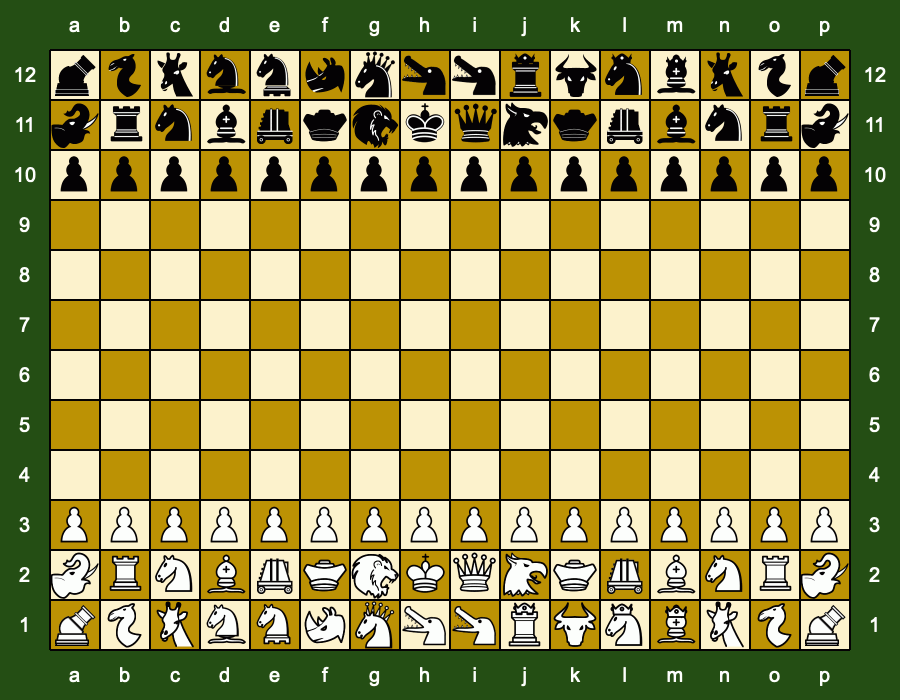
Pieces
King: moves 1 step in any of the 8 orthogonal or diagonal directions to an unattacked square. The King is in check if it is attacked by one or several enemy pieces. It is forbidden to play a move leaving one's King in check.
There is no castling in Gigachess II. On its first move, the King may jump to a free square at two squares' distance. For instance, from f2, it can jump to d1, d2, d3, d4, e4, f4, g4, h4, h3, h2 or h1). It does not matter if the square jumped over is occupied or not; however, the jump is forbidden if that intermediate square is threatened by an enemy piece. When jumping like a Knight, at least one of the two intermediate squares must be free of threat (e.g., if jumping from f2 to h3, either g2 or g3 must not be under attack). The King's jump is not permitted if the King is in check. This rule, which was once prevalent in medieval European chess, replaces castling. Identical to Metamachy.
Queen: slides to any square along the file, the rank, or a diagonal on which it stands. Identical to standard chess.
Rook: moves to any square along the file or the rank on which it stands. Identical to standard chess (except there is no castling)
Bishop: slides to any square along a diagonal on which it stands. Identical to standard chess
Knight: a (2,1) jumper, it jumps to the opposite square of a 2x3 rectangle. No matter what the intermediate square contains. Identical to standard chess
Amazon: it combines the move of Queen and Knight. An old idea, used by Russians instead of the Queen in the 18th century.

Marshall: it combines the move of Rook and Knight. It can be found in many, many chess variants since Carrera, Bird, Capablanca and many others like Grand Chess or Seirawan Chess.

Cardinal: it combines the move of Bishop and Knight. It can be found in many, many chess variants since Carrera, Bird, Capablanca, Modern and many others like Grand Chess or Seirawan Chess.

Centaur: it is another compound piece that moves as a Knight or a non-royal King.
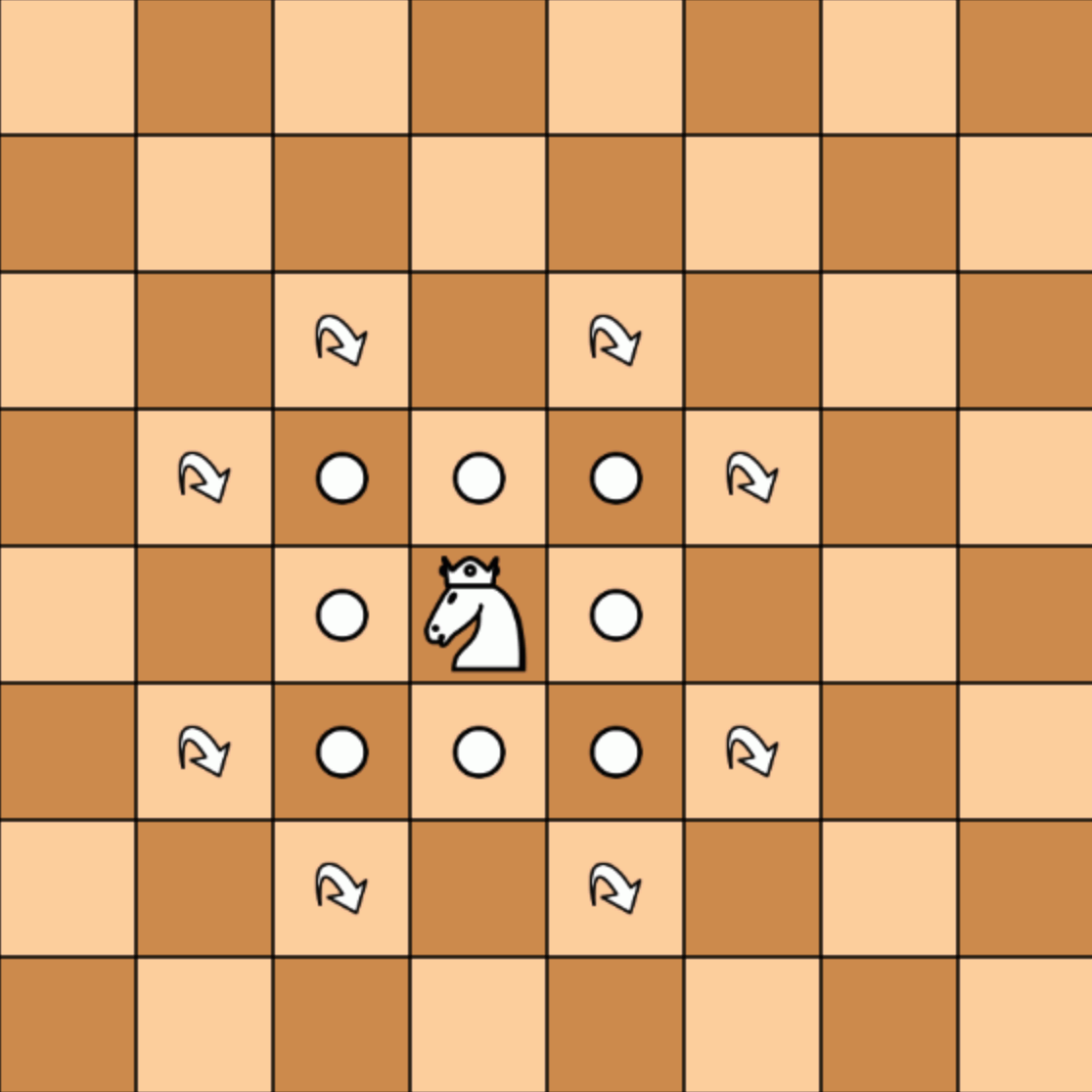
Admiral: it is another compound piece that moves as a Rook or a non-royal King. That means that it is a Rook that can also step one space diagonally. It corresponds to the Dragon King that is found in Shogi.
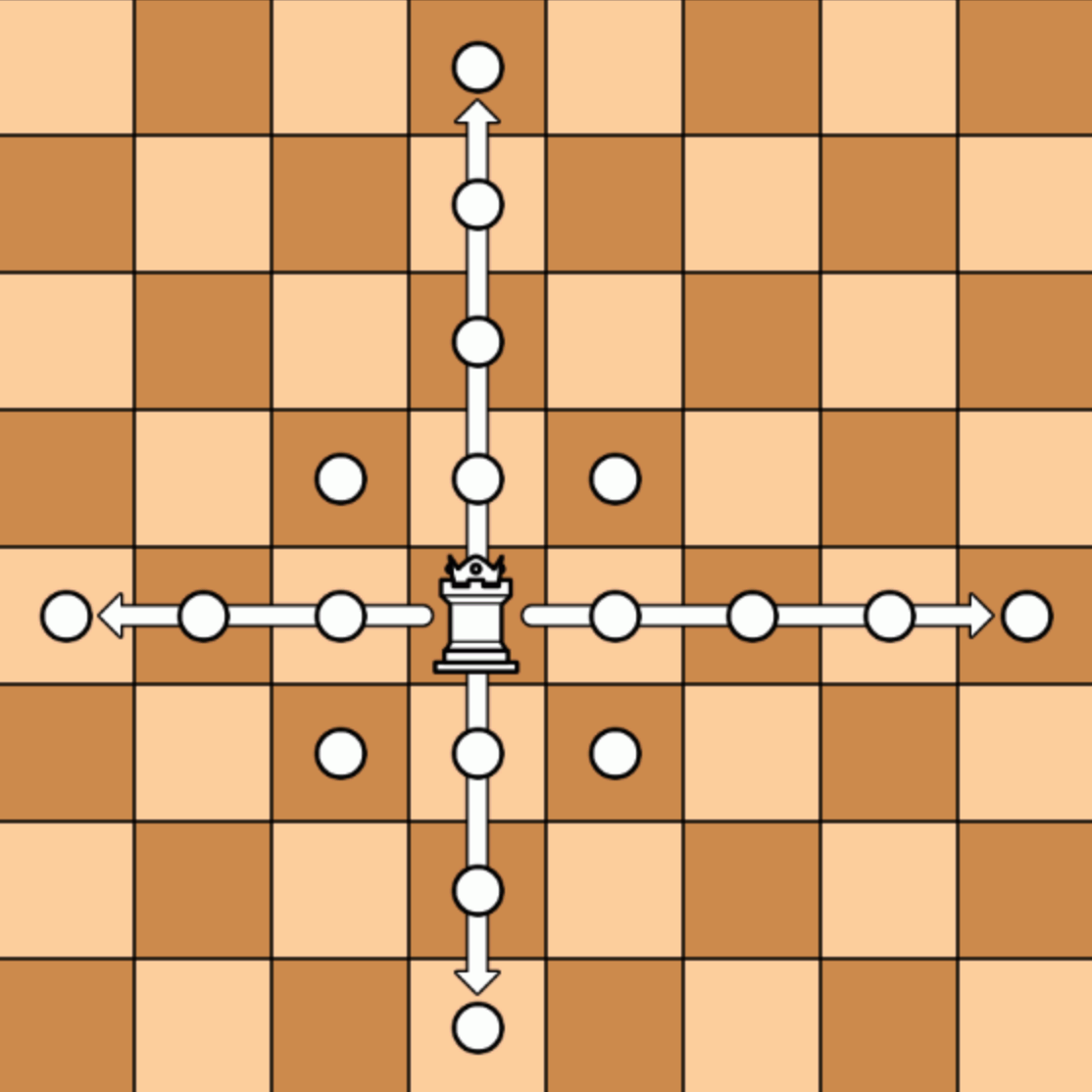
Missionary: it is another compound piece that moves as a Bishop or a non-royal King. That means that it is a Bishop that can also step one space orthogonally. It corresponds to the Dragon Horse that is found in Shogi.
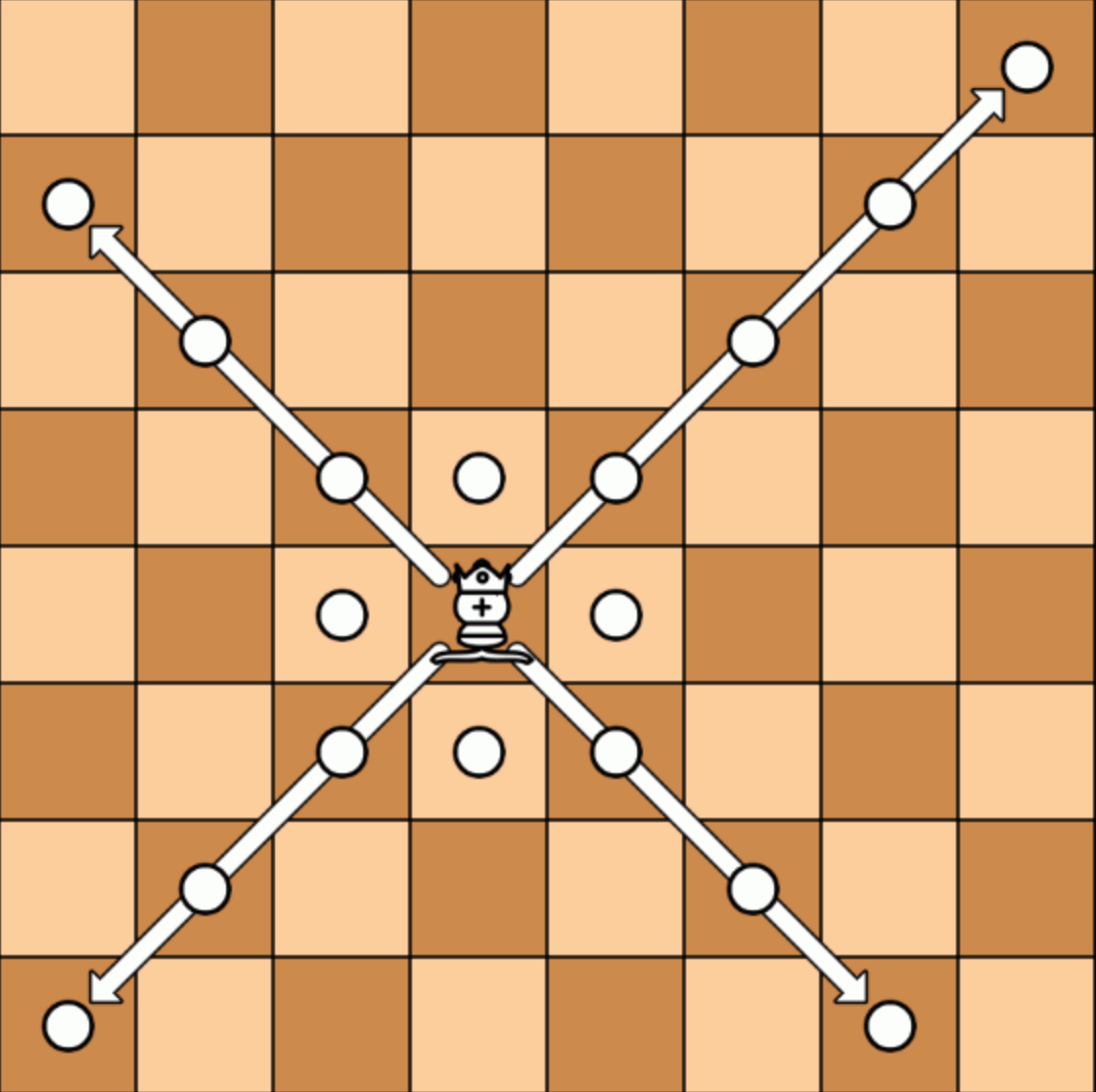
Eagle: moves one square diagonally and then slides away an indefinite number of squares vertically or horizontally. It is authorized to go only one square diagonally. It cannot jump, and the unobstructed path must start with the diagonal movement. This piece is almost as powerful as the Queen and is inspired by the Giraffe from Tamerlane's Chess and the Aanca (a mythical giant bird preying elephants, mistaken for a gryphon) from Alfonso X's Grande Acedrex. Identical to Metamachy.
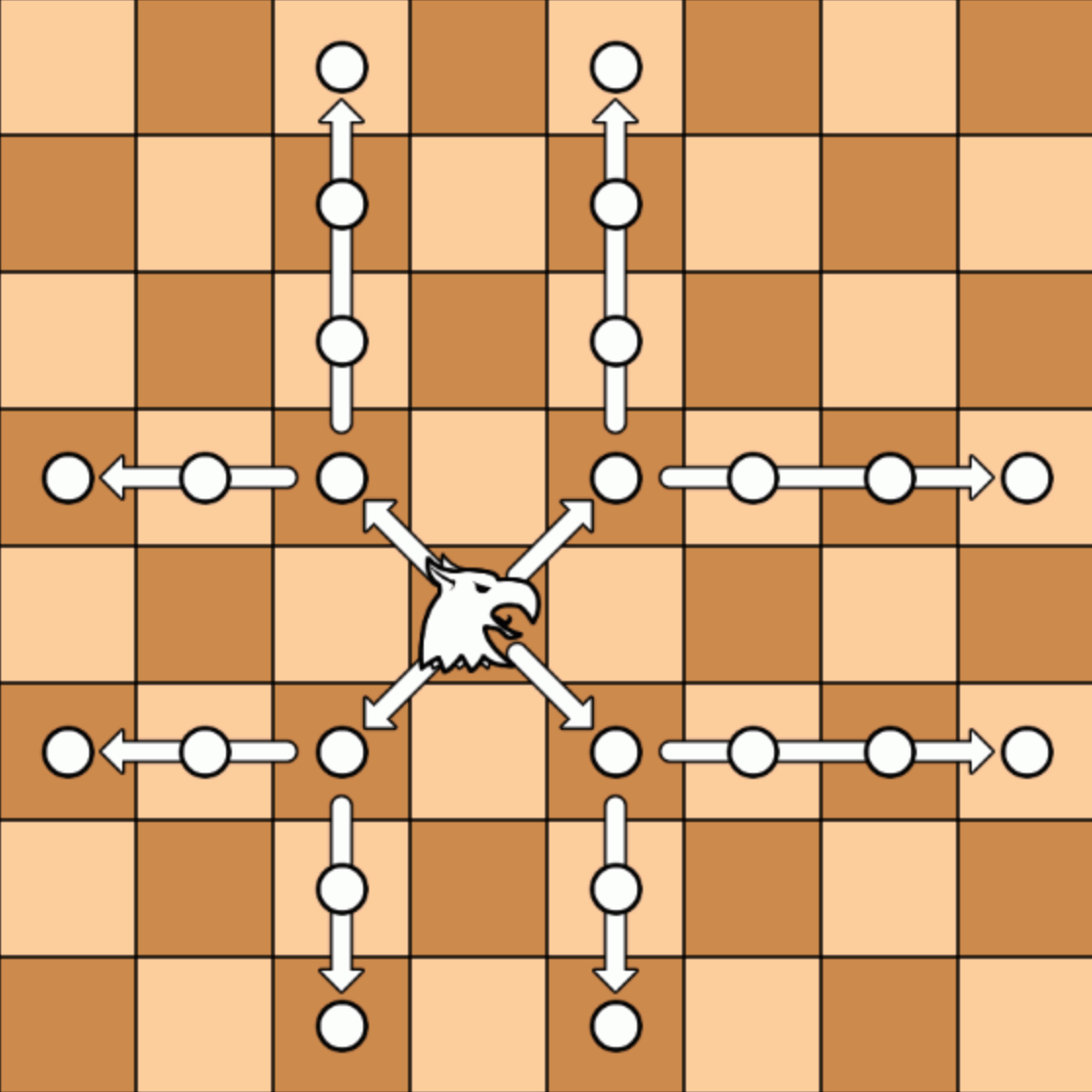
Rhinoceros: moves one square vertically or horizontally and then slides away an indefinite number of squares diagonally. It is authorized to go only one square in along its rank or file. It cannot jump, and the unobstructed path must start with the orthogonal movement. This piece is inspired by the Unicorn of medieval Grande Acedrex. It is a counterpart of the Eagle.

Lion: moves as a King (a single step move in any direction as Wazir or Ferz), or may jump to a position two squares away, jumping in any orthogonal (Dabbaba) or diagonal (Alfil) directions, or jumping as a Knight. (Inspired by Chu Shogi, the most popular variant of the Japanese Chess, where the Lion has the same range but is more dreadful as it can move twice in a turn). Identical to Metamachy.

Camel: a (3,1) jumper, it jumps to the opposite square of a 2x4 rectangle, like an extended Knight, no matter what any intermediate square contains. Note that it always stays on the same color of square. A well known piece from medieval Muslim great Chess like Tamerlane's Chess.
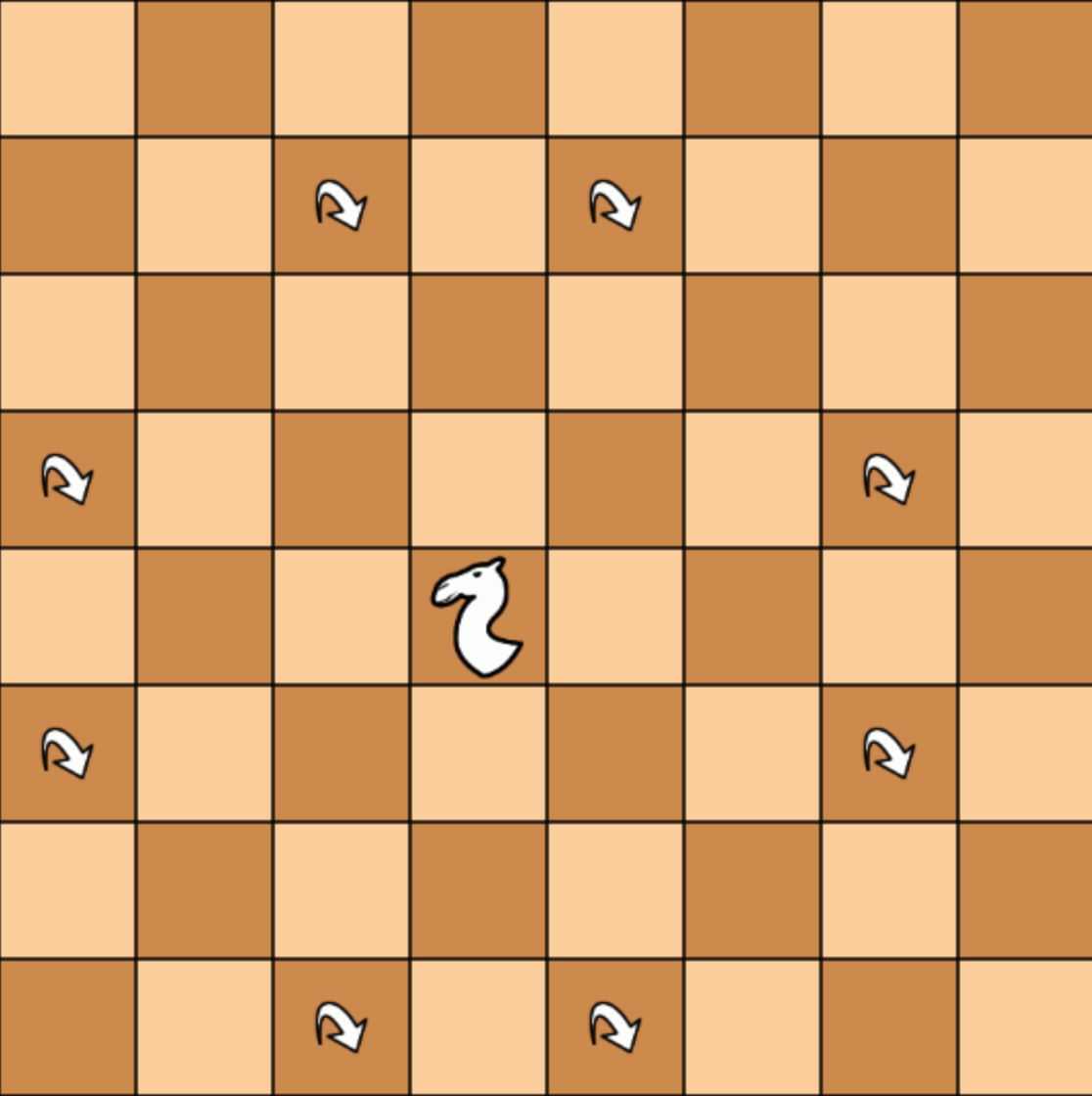
Giraffe: a (3,2) jumper, it jumps to the opposite square of a 3x4 rectangle, like an extended Knight, no matter what any intermediate square contains. Note that it always changes the color of its square. This piece is found in Alfonso X's Grant Acedrex (but its move has been rendered differently by 20th century historians). The same pattern, but with a non-jumping move, is found in Janggi, Korean Chess, for the Elephant. Under the name of Zebra, it is also a fairy piece used by problemists for compositions.

Buffalo: combines the leaps of the Knight (2,1), the Camel (3,1) and the Giraffe (3,2).

Cannon: exactly as in Xiangqi. The Cannon moves without taking like a Rook, but it takes by going in a straight horizontal or vertical line and jumping over exactly one piece. When a Cannon takes a piece, there must be exactly one piece between the original and final square of the Cannon's move - this piece may be of either color. This is identical to the move of the Cannon in Shako and Metamachy.
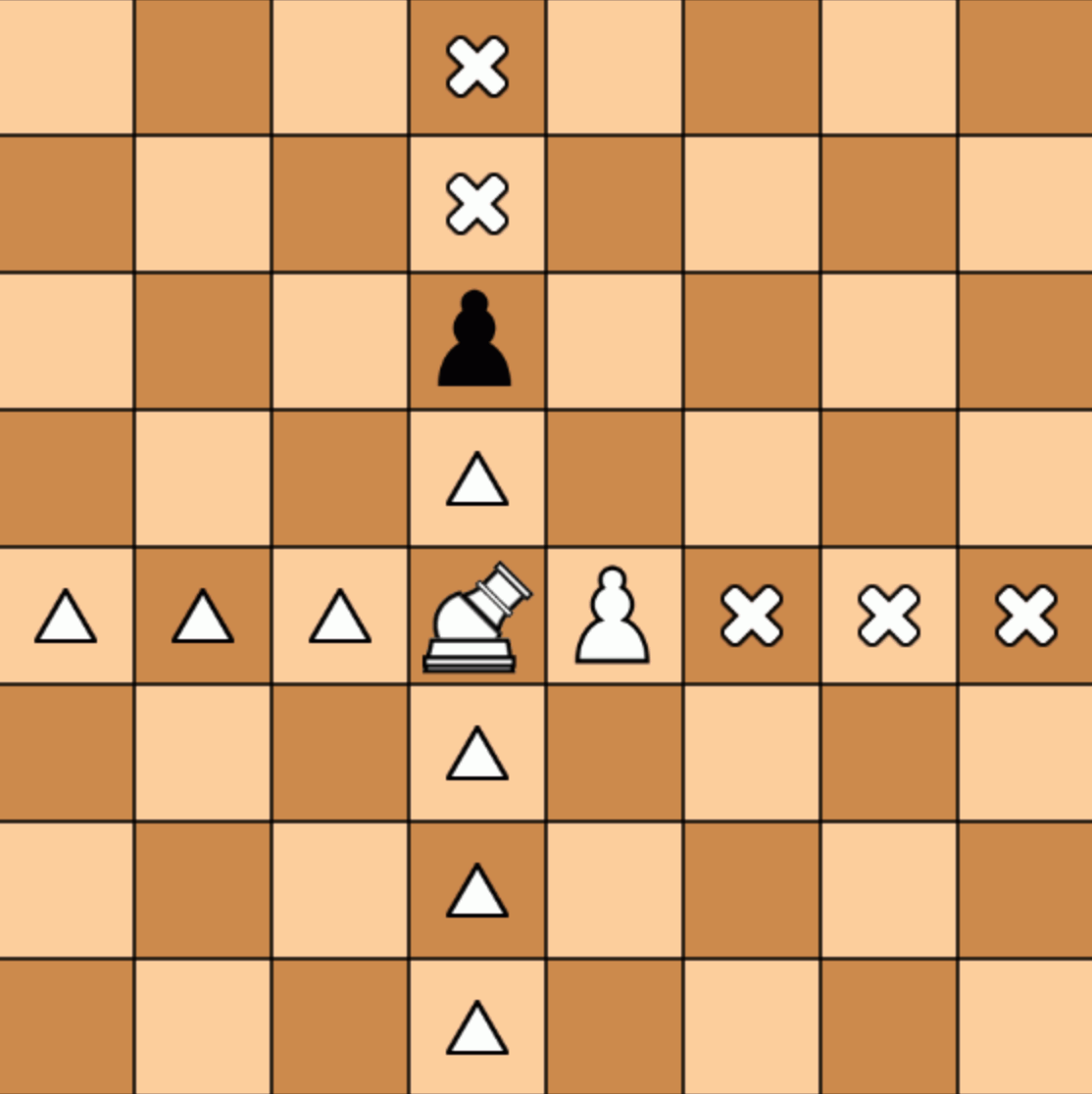
Crocodile: it is the diagonal counterpart of the Xiangqi's Cannon. It moves like a Bishop (which was named Crocodile in Grant Acedrex) and needs an intermediate piece between itself and its victim to capture it. The Crocodile jumps the intermediate and takes the victim on its square. The intermediate is left unaffected. (Also known as Vao by problemists).
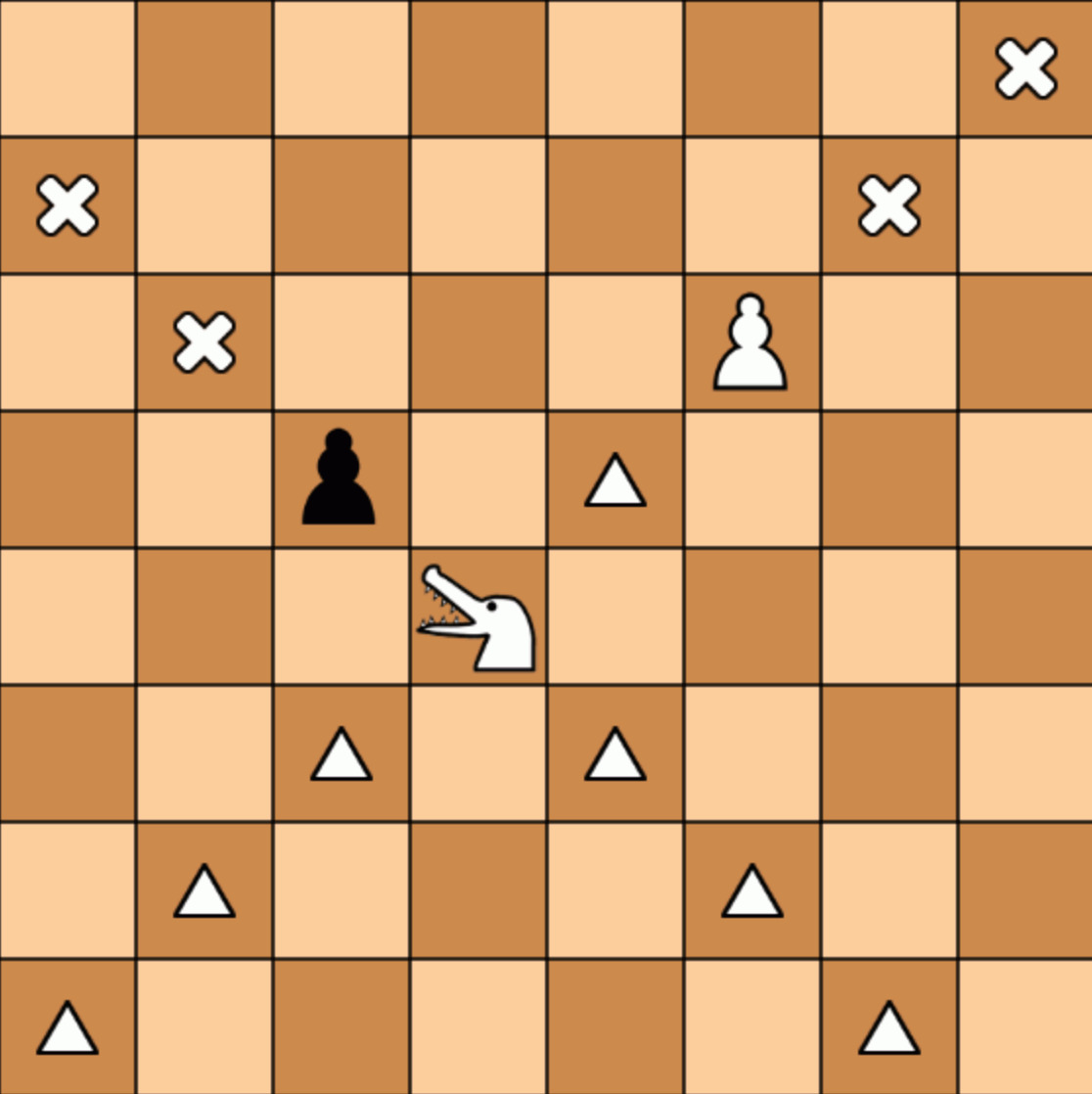
Machine: it is an orthogonal counterpart of the Elephant as it moves 1 or 2 squares orthogonally, jumping over the first square if it is occupied. Then, it combines the moves of old Dabbaba and Wazir found in ancient Muslim Chess variants. The word Dabbaba designated a siege machine at war in Arabic, hence the name given for this piece.

Elephant: exactly as in Shako and Metamachy. It moves one or two squares diagonally. When an Elephant moves two squares, it doesn't matter what the intermediate square contains. Note that it always stays on the same color of square. The Elephant moves as the combined Alfil and Ferz from Shatranj, two pieces which were also present in mediaeval Chess and have disappeared with the birth of modern moves for the Bishop and the Queen.
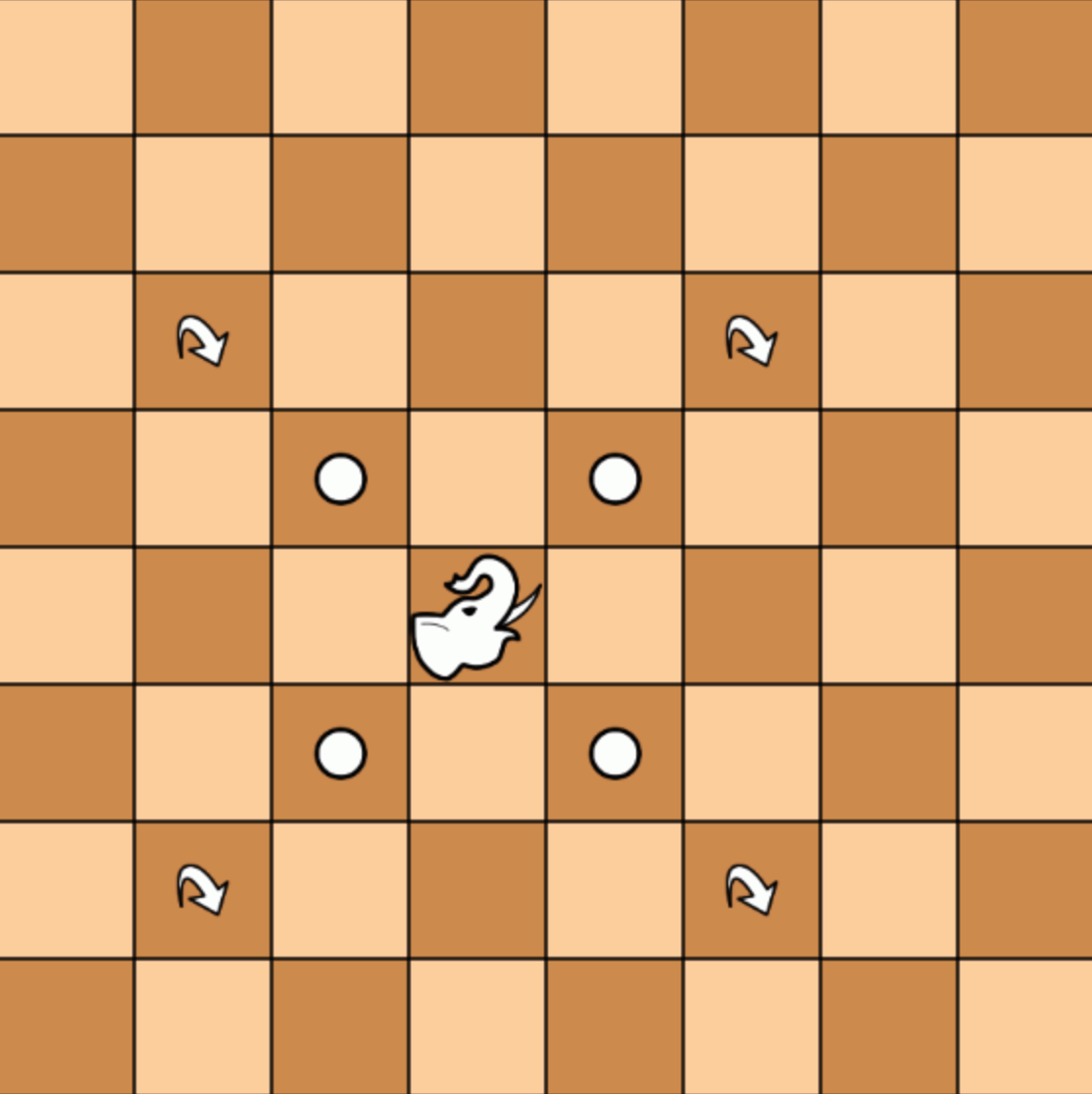
Prince: a non-royal King who moves and captures one square in any direction, but without being hindered by check. It has been inspired by medieval games like the Courier chess , an old chess variant, played in Germany, where it is called "Man". Like the Pawn, but unlike the Man from Courier Chess, it can also move without capturing to the second square straight ahead.
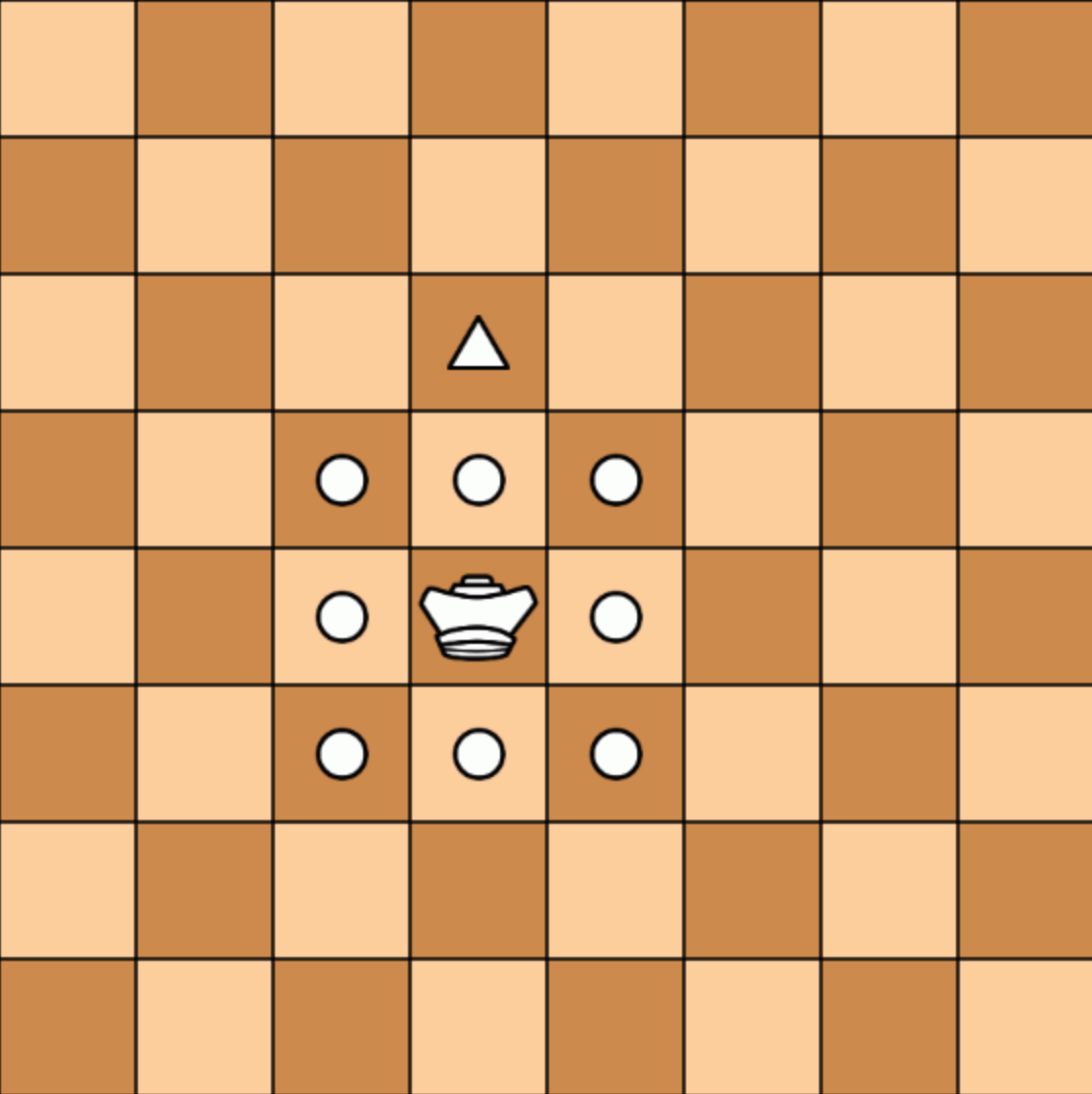
Pawn: can move straight forward one or two square from any position on the board, without capturing. It captures one square diagonally forward. Identical to Metamachy.

Rules
Pawn and Prince Promotion: A Pawn or a Prince reaching the last rank of the board is immediately replaced by an Amazon, a Lion, an Eagle, a Rhinoceros or a Buffalo. Promotion to any other type of piece is not allowed. It is permitted to promote a Pawn or Prince to a type of piece already present on the same side; however; it is considered "good etiquette" to avoid choosing a piece which is not captured yet, if possible.
En Passant capture: Any time a Pawn or Prince takes a double step and passes through the capture square of an opposing Pawn, that Pawn may capture the Pawn or Prince as if it had only moved one square. This en passant capture must be made in the move immediately following the double step. Only a Pawn may capture en passant; the Prince does not have this option.
End Of Game: The end-of-game rules, checkmate, stalemate, etc., are identical to standard chess.
Notes
Pieces Value:
Estimated average pieces value, normalized to 5 for the Rook : Pawn: 1, Giraffe: 2, Camel: 2, Elephant: 2, Knight: 2, Machine: 2.5, Prince: 3, Crocodile: 3, Bishop: 3.5, Cannon: 4, Missionary: 4.5, Centaur: 4.5, Rook: 5, Cardinal: 5.5, Rhinoceros: 6, Buffalo: 6, Admiral: 6, Lion: 6.5, Marshall: 7, Queen: 8, Eagle: 8.5, Amazon:10
These values are just given for a very rough estimate.
A lot of players would disagree and give less or more points to several piece. Never mind, make your own scale.
Deep thanks to H.G. Muller for making the Interactive Diagram below
 This 'user submitted' page is a collaboration between the posting user and the Chess Variant Pages. Registered contributors to the Chess Variant Pages have the ability to post their own works, subject to review and editing by the Chess Variant Pages Editorial Staff.
This 'user submitted' page is a collaboration between the posting user and the Chess Variant Pages. Registered contributors to the Chess Variant Pages have the ability to post their own works, subject to review and editing by the Chess Variant Pages Editorial Staff.
By Jean-Louis Cazaux.
Last revised by Jean-Louis Cazaux.
Web page created: 2020-12-20. Web page last updated: 2020-12-22
